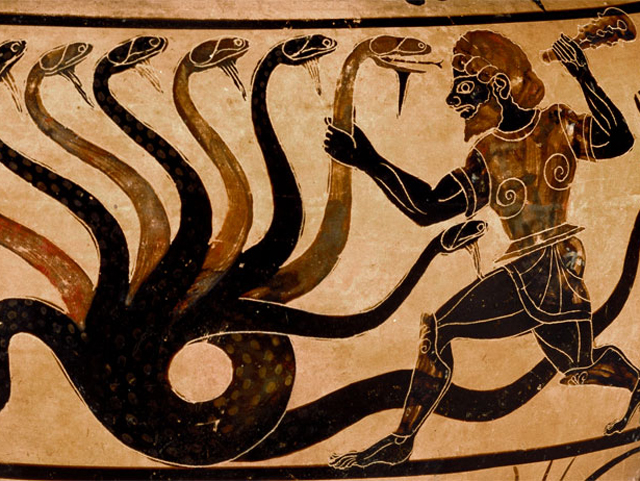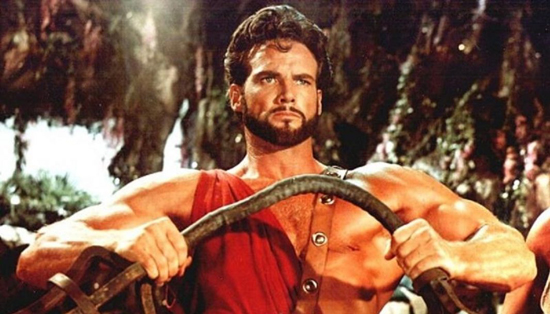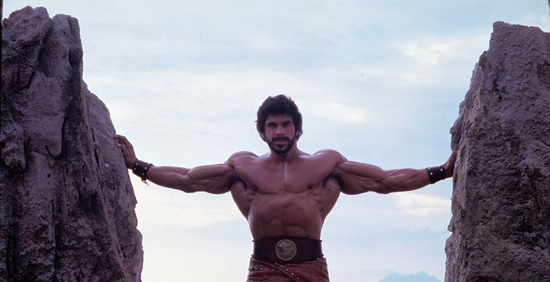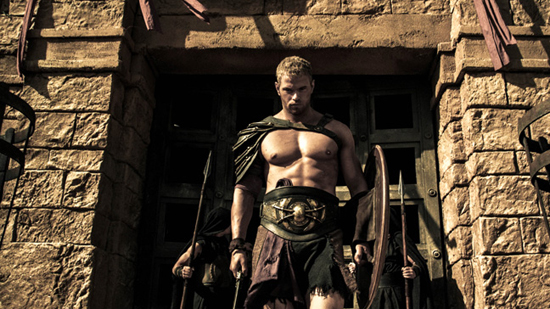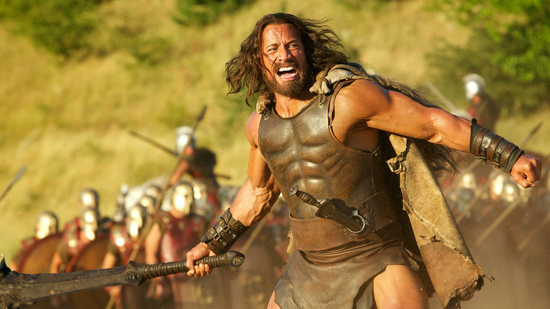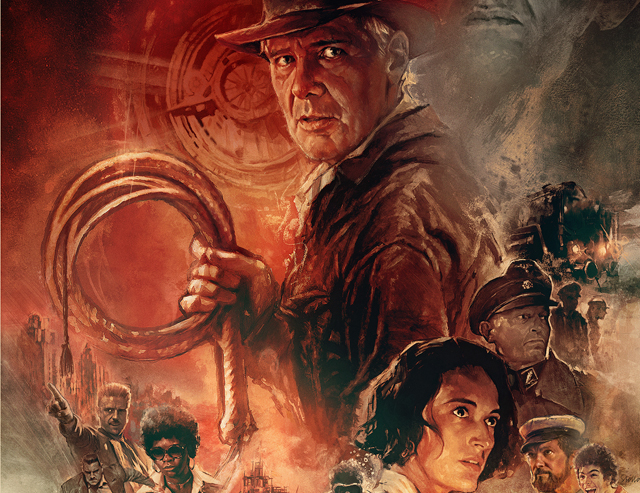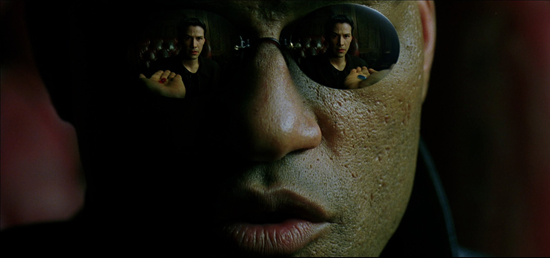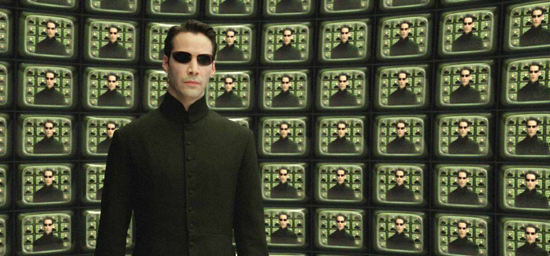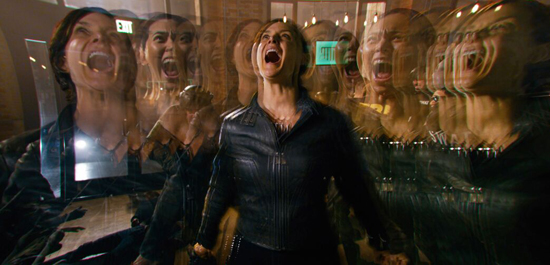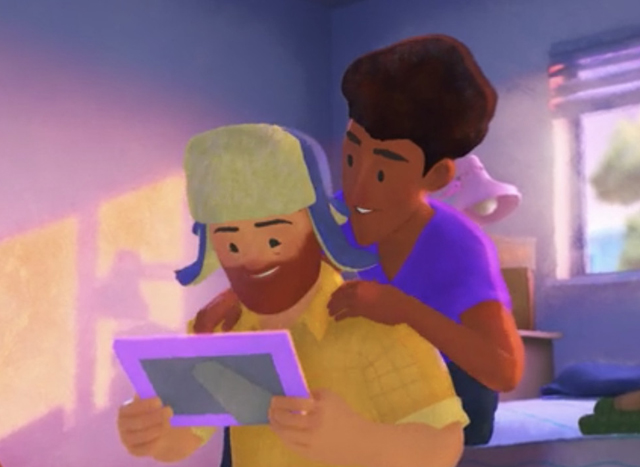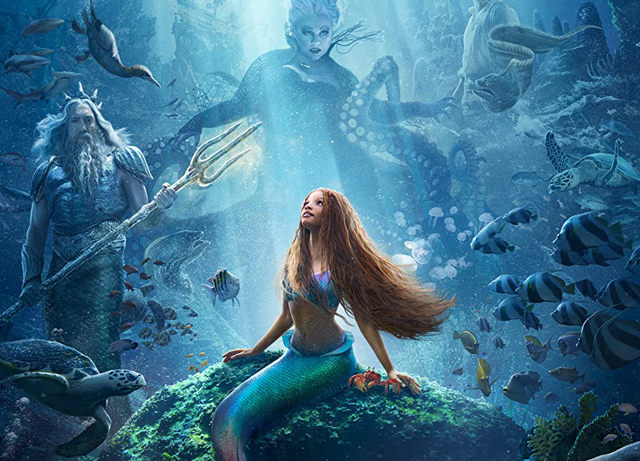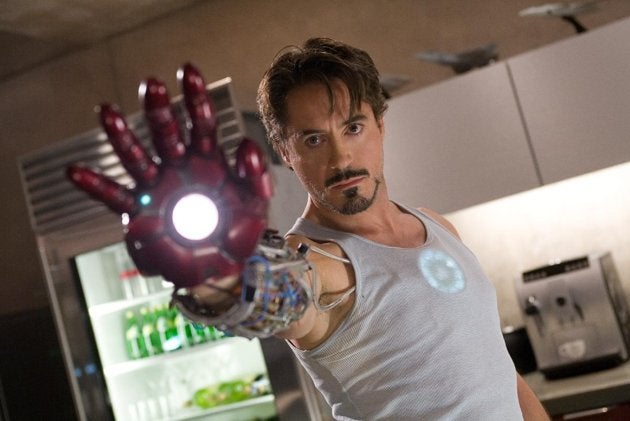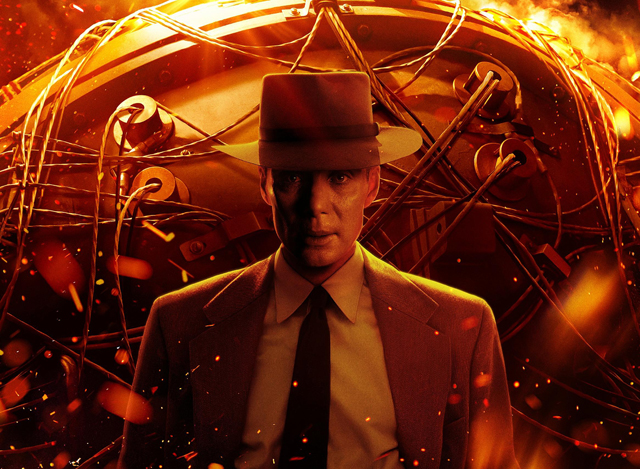
I know that you’re clicking on this to hear my thoughts on Christopher Nolan’s new big screen epic Oppenheimer, but before I get to that, I really want to delve into the strange phenomenon that is surrounding the release of this movie. Back in 2020, Nolan was set to release his highly anticipate film Tenet (2020) into theaters; specifically in large format venues like he has for many of his previous films like The Dark Knight (2008), Interstellar (2014), and Dunkirk (2017). Unfortunately, the Covid-19 pandemic upended those plans, as theaters across the country were closed, especially in the big markets of New York and Los Angeles. This made it impossible for Tenet to get the kind of roll out that Christopher Nolan preferred for his movies. Being a champion for large format filmmaking, with 70mm IMAX being his go to choice in film stock, Nolan wanted to be sure that his movie would be getting the ideal release in theaters in the preferred format. Unfortunately for him, Warner Brothers (the company behind the film) didn’t see eye to eye on his plans for the film. They seemed more willing to release the film on streaming to help boost subscriptions for their then struggling launch of the HBO Max platform than sitting on the film for another year once theaters were ready to re-open. Eventually, the movie released in theaters right in the midst of the pandemic, with Nolan unable to have the ideal roll out on large format screens, and as a result the film had a measly result at the box office. This in turn soured relations between Nolan and Warner Brothers, which had been his home for the last 20 years, and Christopher Nolan soon cut ties with the studio, seeking a new distributor for what would be his next film, Oppenheimer.
Universal Studios wound up taking Christopher Nolan into their wings and granted him the chance to make his ambitious new project at their storied studio, ironically just across the street from Warner Brothers in the San Fernando Valley. With the pandemic now in the rear view mirror, Nolan finally had the opportunity to make a large format film that could connect with a mass audience once again, and with movies like Top Gun: Maverick (2022) and Avatar: The Way of Water (2022) helping to revitalize the IMAX experience, the timing couldn’t be more ripe for this movie to succeed. Unfortunately, Nolan’s plans ran into a roadblock with his former studio. Warner Brothers decided to release a big blockbuster film on the same weekend as Oppenheimer; that being their big screen film based on the Barbie doll line. The colorful Greta Gerwig directed film starring Margot Robbie as the titular icon couldn’t be more different tonally than Nolan’s Oppenheimer, and many saw this move as a petty move on Warner Brother’s part to undercut Nolan at the box office. WB had the mass appealing, toy brand film and Universal had the introspective historical drama about the creation of the atomic bomb. Surely, Nolan didn’t have a shot at succeeding, and many believed that Oppenheimer would budge from it’s release date first so it wouldn’t have to compete. Only it didn’t. Both Warner Brothers and Universal decided to keep their release dates, and this in turn led the internet to create a faux rivalry about these two polar opposite movies. It became Barbie vs. Oppenheimer; a joking battle that sparked a lot of discussion about this inevitable showdown. But then, a funny thing ended up happening. Instead of two warring factions forming, people on the internet began to create a new faction that was in favor of celebrating both films together. The “Barbenheimer” phenomenon was born, with many people deciding to turn the release of both films into a cinematic event, committing to seeing both back to back. So ironically, if Warner Brothers did mean to undercut Christopher Nolan by releasing Barbie opposite Oppenheimer, it ended up backfiring as the Barbenheimer craze ended up inextricably linking both film’s fortunes together. No matter how well each film performs, which early estimates point to being very strong, this phenomenon is something that will probably go down as one of the most peculiar in movie history. With that, let’s now finally talk about the movie Oppenheimer itself.
The movie is a look at the life of J. Robert Oppenheimer (Cillian Murphy), the physicist who oversaw the development of the first atomic bomb; a pivotal moment in scientific and human history. The film itself looks at Oppenheimer’s life from several different points; his early years as a student in quantum physics, his development of the nuclear research program that would lead to the creation of the bomb, and then the years afterwards when his distress over the rise of the atomic age led to him being suspected of treasonous activity by the US government. In his early years, we see him gain prominence in the field of physics based science, earning recognition from esteemed peers in the field, such as Niels Bohr (Kenneth Branagh) and Albert Einstein (Tom Conti). While working in the same laboratory as prominent American physicist Ernest Lawrence (Josh Harnett), Oppenheimer is approached by Army General Leslie Groves (Matt Damon), who is seeking to enlist Oppenheimer into the program to develop nuclear powered weapons for the military. Though Oppenheimer is opposed to war, he knows the dangers of allowing Nazi Germany to gain a nuclear capabilities before the Allied Powers, so he accepts the position. In a short amount of time, Oppenheimer and the military personal under Groves command achieve their miracle and develop the first successful atomic bomb test. In the years after, Oppenheimer feels guilt for the destruction his work caused, and he begins to become a vocal critic of American nuclear policy. This puts him at odds with the head of the Atomic Energy Commission, Lewis Strauss (Robert Downey Jr.) who works secretly to discredit Oppenheimer and ruin his reputation. Dirt is dug up around Oppenheimer, including his ties to people who were members of the Communist party, including his own brother Frank (Dylan Arnold) and a woman named Jean Tatlock (Florence Pugh) whom he had a multi-year affair with. The turmoil of this period also puts a strain on his relationship with his wife Kitty (Emily Blunt). Facing both internal turmoil over the guilt of his actions and the severe attacks to his moral character in the public eye, Oppenheimer’s story turns into one of tragedy after he had gained immortality for changing the world; a distinction that has gained him the nickname of the “American Prometheus.”
There is a lot going on in Christopher Nolan’s Oppenheimer. It is to date the longest movie that the director has ever made, running an even 3 hours, which is quite something, given that the average Christopher Nolan film typically clocks in at 2 1/2 hours. And even in those 3 hours, Nolan does not let off the gas once. This is a movie that covers so much ground and doesn’t waste a second. Like he did with Dunkirk, Christopher Nolan tells his story in a non-linear way, moving back and forth in time to different points in time. This is a bit disorienting, and it actually is one of my nitpicks about the film, as Nolan doesn’t give us much time to ground ourselves into the story. In some ways, it is kind of refreshing that he doesn’t hand hold us through the movie; there are no texts printed on screen to give us historical context, nor to tell us where we are, or who the people we are seeing are. It’s a good sign that Christopher Nolan is trusting his audience to keep up, but one thing that I think undermines the effectiveness of this mode of storytelling is that the story being told is a tad too complex for it to work as well as intended. Dunkirk played around with non-linear storytelling much better because it kept things simple; three specific storylines with easily definable characters, which made the whole through-line more consistent. Oppenheimer doesn’t exactly fail in this regard, but it comes up just a little short too, because the different parts of the story don’t completely line up as well as he planned. That being said, the individual story elements are still exquisitely constructed and are very impressively put together. This certainly is the most ambitious film in Nolan’s oeuvre and that is saying something. As I am writing this review, I am only separated from my first viewing by 24 hours, so I am still trying to process everything, and subsequent viewings may indeed allow me to see the film as a more complete whole. For right now, my most nagging feeling after seeing this film is that as impressive as it is, I feel like I’ve seen Nolan do better before, but at the same time it’s a movie that I am still processing and may appreciate more over time.
It’s perhaps the fact that this movie is working on a much different level than other Christopher Nolan films and it wasn’t the same visceral viewing experience that I got from my first time viewings of Inception (2010) and Dunkirk, which to this day are still my #1 and #2 favorite Nolan films. Oppenheimer is Nolan’s first ever biopic, and that is kind of uncharted territory for him. Instead of developing larger than life conceptual films like Inception and Tenet, or an original story set in backdrop of a real historical event like Dunkirk, here he is applying his filmmaking skills to telling the story of a real man who achieved one of the most monumental actions of not just the 20th century, but of all human history. The story of Oppenheimer fits well within the filmography of Christopher Nolan, as he has always been fascinated with the perils of human beings who play around with the extremes of science. That’s a trademark of most of his work, including even some of the Batman movies he made. Certainly the IMAX loving filmmaker that Nolan is would be drawn to the idea of making a movie about the first atomic bomb test, which would certainly be epic enough for the larger than life format. But, strangely enough after seeing this movie, I feel like it’s the man who drew Nolan in more than the event itself. The vast majority of this movie is devoted to examining the life of Oppenheimer, and the firestorm of controversy that surrounded it. It is far more of a drama than a spectacle, though the movie does have it’s sweeping moments too. As a dialogue writer, Nolan does have some shortcomings. There are some oddly written moments that seem a little too poetic for a grounded film like this. At the same time, Nolan’s sweeping narrative never lags, as he covers a lot of ground and manages to keep the pacing consistent, which is impressive for a movie this length.
One of the most striking things about this movie is it’s cast. Despite being centered around one man’s journey, the film features a stacked cast of hundreds, and a hefty chunk of them are all played by familiar faces. A lot of people have likened this to Oliver Stone’s JFK (1991), which had all the parts, no matter how big or small, filled with a famous actor. Kenneth Branagh’s Hamlet (1996) also comes to mind. Watching Oppenheimer, you’ll be struck by just how many well known actors suddenly pop up throughout the movie, even for just one scene. But, out of all that cast, there are certainly standouts, and chief among them is Cillian Murphy in the title role. Murphy has been a long time favorite of Nolan’s, first appearing as the villainous Scarecrow in Batman Begins (2005), Murphy has subsequently been cast in five more films that Nolan has directed. But here, for the first time, he gets to play the lead, and he does not disappoint. Cillian appears in almost every scene in this movie, and he commands every moment. It’s not a showy performance; J. Robert Oppenheimer didn’t exactly have an outsized personality. But, Murphy does get across the humanity of the character in a profound way, with the pained look in his eyes as he is constantly having to balance the science in his head with the realities of his life. Of the supporting cast around him, there are certainly some great stand outs. Matt Damon brings some much needed levity to the film as the tough as nails general whose personality style clashes with the quiet, methodical Oppenheimer, which leads to some of the film’s more amusing character interactions. Emily Blunt also brings some fiery sparks to her character of Oppenheimer’s opinionated wife Kitty. But perhaps the most astounding commanding performance other than Murphy’s Oppenheimer is Robert Downey Jr. as the vindictive government power player Lewis Strauss. Downey’s Strauss is another fascinating character, a person who feels threatened by the shadow that Oppenheimer casts, and RDJ does an amazing job of portraying this character without turning him into an overt, base villain. There’s a lot of other surprisingly deft work from a variety of actors; including a couple of Nolan’s favorites like Kenneth Branagh, Tom Conti, and even Gary Oldman in a surprise role; and there are great performances from Nolan first timers as well, like Benny Safdie, Josh Hartnett, David Krumholtz, Florence Pugh, and Jason Clarke. For a cast as monumental as this one, you never feel at all like Nolan wasted any of that talent.
Of course, the thing that most people are going to talk about with this movie is the craft behind it. Nolan is working again with Hoyte Van Hoytema, the Dutch cinematographer who specializes in large formats that he has worked with consistently since Interstellar. They once again deliver a stunning display of the 70mm IMAX film format, though the strengths of their work here are not what you would expect. The movie has some amazing sweeping shots of the Los Alamos testing site, but just as impressive are the IMAX close-ups of Oppenheimer himself during his most intimate moments of self-reflection. Perhaps the most brilliant moment of the movie is not the actual bomb test itself (which to be honest was a tad underwhelming), but instead it is a moment in the movie where Oppenheimer gives a speech. What Nolan and Hoytema do in this scene, holding the camera uncomfortably close to Cillian Murphy’s face in the scene, really emphasizes the isolated state of mind he is in and it is a captivating moment, especially given how the scene plays out. Another incredible thing about the cinematography in this film is that the team actually coordinated with the people at IMAX to essentially invent black and white IMAX film; something that had never been done before. Those black and white moments in the movie are quite something too; especially with the amount of clarity the image has. It’s also thematically inventive as well, as black and white alerts us to when we move away from Oppenheimer’s POV, and shift to the POV of his rival, Lewis Strauss. And while I did state I felt the actual atomic blast looked a bit underwhelming for what could have been the most impressive IMAX image ever (what we got sadly lacks scale), the use of sound in that scene was still inventive and interesting. The sound mix in this movie alone is a work of art, with much of the sound effects helping to lift the sense of bigness to this film. It is also impressively underscored with a largely experimental epic music score by Ludwig Goransson, who returns to team Nolan after working on the score for Tenet. Couple all that with exceptional era detail that really helps to drop you into the time period and you’ve got an epic drama that truly lives up to the word.
It will take me some time to figure out where I would rank it with Christopher Nolan’s other films. I did like it more than Interstellar and Tenet, but it also didn’t hit me with the same visceral first time reaction that I had with The Dark Knight, Inception, or Dunkirk. Those are among my favorite films of all time, so it’s an extremely high bar to overcome, but that’s my tastes. Overall, Oppenheimer is a mostly successful work of cinematic art that just falls a little short of perfection for me, but at the same time I feel like this will be a movie that grows on me. After a day to let the movie simmer in my mind, I am still processing what I saw and that’s a good sign that it’s a movie that is sticking with me well after I’ve first seen it. Given that we’ve had a summer full of movies that have failed to leave much of a lasting impact, it’s refreshing to finally have a movie come out that I actually think will leave an impression on cinema in general for this year and beyond. For one thing, the Barbenheimer phenomenon is something that I think is going to be studied and analyzed for years to come. For something to start off as little internet joke to actually manifest into a full blown real cinematic event that actually mutually benefitted both movies involved is one of the most unexpected cultural outcomes that I have ever witnessed. On the plus side, these are two movies deserving of the good fortune that fell into their laps; as an aside, I do also recommend Barbie as well. After a lackluster summer so far that saw longtime franchises like Mission: Impossible, Indiana Jones, and Transformers fail to light up the box office, it’s great to see audiences rally around these two movies that somehow by virtue of sharing the same day have become spiritually linked. One other added pleasure is that the overwhelming success that these two films are likely to have really breaks the back of the “get woke, go broke” narrative about Hollywood that so many annoying internet trolls have been proclaiming all summer. Because of the “Barbenheimer” craze, the two most “woke” movies are about to be the summer’s biggest successes; the gender conformity breaking social commentary of Barbie and the compassionate biography of the unambiguous leftist J. Robert Oppenheimer. In the end, it’s not about politics, but about making personal stories that connect with a broad audience, and offer something new and fresh, and that in essence is what is making Barbenheimer the event that it is. We are finally getting movies that actually have ambition behind them, and don’t just feel like an obligation to keep entrenched franchises going. This is an especially lucky moment for Oppenheimer in particular because a 3 hour historical drama about the creation of the atom bomb is not the kind of movie that should be riding the wave of a grassroots internet driven phenomenon. “Barbenheimer” is a rare beneficial good thing that has gone viral in our often toxic internet culture, as it is helping not just to make hits out of two deserving and provocative movies, but it’s helping to boost business for movie theaters that have been struggling with the lackluster summer we’ve had so far. Despite some flaws, Oppenheimer is a genuine big screen event not to be missed (preferably on the biggest screen possible), and if you so choose to make it a double feature with Barbie, all the better because both films are great reminders of why the cinematic experience matters. Here’s to Barbenheimer, savior of cinema.
Rating: 8.75/10
